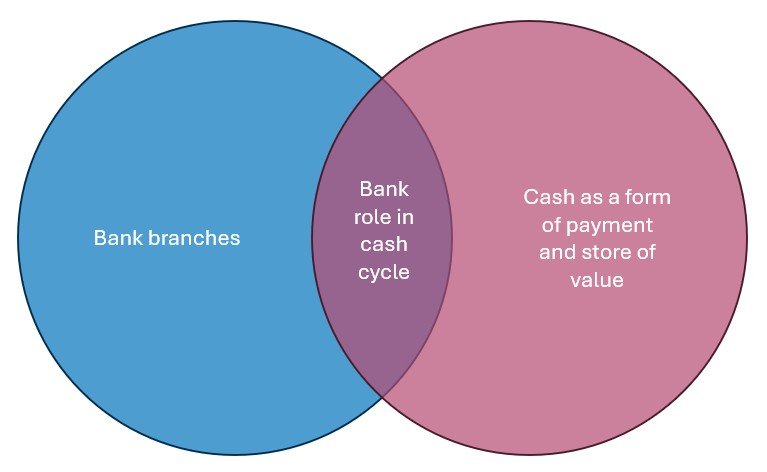There has been broad reporting of the latest S&P ratings report on the Australian banking sector, released this week. In particular, the report calls out political pressure on the sector. Two call-outs of note:
- Maintaining branch networks. S&P believe that banks will be encouraged (required?) to maintain regional branches (“We expect the government will continue to encourage banks to maintain regional branches. In its final report released in May 2024, the Senate committee investigating bank closures in regional Australia advised the government to recognize access to financial services as an essential service and to ensure reasonable access for all Australians”)
- Cash access. S&P have observed the shift toward cash being seen as a public good (“Maintaining cash access has shifted from a focus on profitability, to fulfilling government and customer expectations”)
We broadly agree with S&P’s analysis of these issues. They do, however, highlight a propensity by both politicians and to a lesser degree the banks toward short term decisions based on surface level interpretations. There is a way to deliver everything that is needed, in a more sustainable, reliable, and cost-efficient way.
Some of the questions that need to be asked include:
- Why do consumers and businesses want branch networks to be maintained? Is it for access to cash services? Is it for the myriad customer service needs that require physical presence? Is it to speak with a banker for specific needs – mortgages and business lending being two typical examples?
- The focus has principally been on regional bank branches, but do metro areas also need to be considered? If alternate models are considered then they will almost certainly need the volume that comes from the big capital cities if they are to be viable
- What are the key motivations of the banks? Shareholder return, social contract, brand presence, customer support – these and more will all be part of the mix. While the approach seems to currently lean toward strong-arming the sector, it would be better to understand objectives and develop solutions that support achieving those objectives
- What does appropriate cash access look like, and what is the full circle of this (it is no good having ATMs on every corner if cash can’t be used and if businesses can’t bank the cash)?
- Is cash a public good, and if it is what does that mean for the future of cash? Who is the ultimate custodian? Who pays for it?
- What is the role and responsibility of the banking sector in the cash cycle? Is it just to their customers, or is it to the community overall? If it’s to the community – is that all banks, or only some?

As these questions are answered, it is then possible to develop a more nuanced and effective solution fit for the long term (as the RBA recently noted is needed). Potential design elements include:
- Changes to the wholesale cash system (the way that the RBA and four major banks access, hold and return cash)
- New ways of doing physical banking, including multi-bank/utility models. While Bank@Post is there and has had an uplift in support through ANZ’s move, S&P agrees with what we have been saying for some time now – Bank@Post is not a replacement to bank branches in any substantive way in its current form
- Efficient distribution, return, and recycling of cash. One of the biggest challenges of cash in contrast to other payment forms is its physical nature. The way cash is physically moved has hardly been challenged, and indeed there are regulatory constraints that make change difficult, from the RBA and AUSTRAC as a start
- Multi-player models across all parts of the cash cycle
- Incorporation of digital solutions to drive efficiency
It is time for deeper thinking and consideration of what is driving the expectations around bank branches and cash access, in order to act on transforming the system for a sustainable and efficient future.
